The transformer is the first part of the power supply, but you need more to get DC.
The varying input voltage of the transformer creates an equally varying magnetic field in the metal core. This magnetic field in turn creates an, again varying, voltage on the output. Both input and output voltage are sine waves. It's called AC (alternating current) because the sign of the output voltage changes continuously, 100 or 120 times per second, depending on the country you live in.
You rectify this AC voltage to get rid of the sign changes; one pin will always be positive with respect to the other one.

The one thing which remains to be done now is to flatten the curve, get rid of the bumps. This is done by a capacitor. You now have a DC (direct current) voltage which is already usable for a number of situations. This voltage, however, may still show slight variations, which may be unwanted. To get rid of those you follow the capacitor by a voltage regulator.

